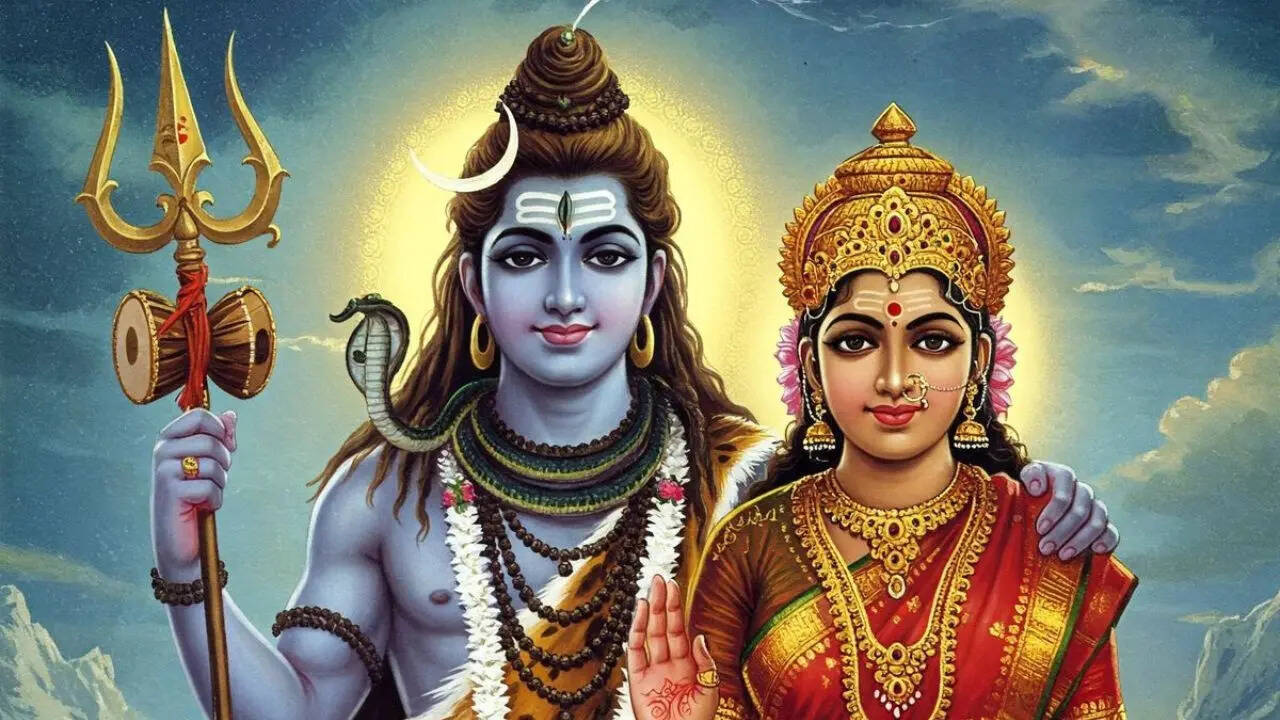Lifestyle
Kajari Teej 2025: Celebrations, Rituals, and Key Timings

The sacred festival of Kajari Teej is being celebrated today, 12 August 2025, with married Hindu women observing a day-long fast dedicated to Lord Shiva and Goddess Parvati. This festival, recognized for its significance in North India, falls on the Tritiya of the Krishna Paksha in the Bhadrapada month. It is marked by various traditional rituals and special prayers aimed at promoting marital bliss.
Kajari Teej, often referred to as Badi Teej in contrast to Chhoti Teej (also known as Hariyali Teej), has several regional variations in its name, including Kajali Teej and Kajri Teej. As noted by Drik Panchang, it is celebrated 15 days after Hariyali Teej and typically occurs three days after Raksha Bandhan, aligning five days before Krishna Janmashtami. The festival holds a place of importance in the North Indian calendar, where it is observed during the Krishna Paksha of Bhadrapada, and in the South Indian calendar, it is noted during the Krishna Paksha of Shravana month.
Key Timings for Kajari Teej 2025
For this year, the auspicious Krishna Tritiya Tithi of Bhadrapada commenced at 10:33 AM on 11 August and will continue until 8:40 AM today. Observing the fast is aligned with the Udaya Tithi, which confirms that the Kajari Teej fast is observed on 12 August. Additionally, the Sarvaarth Siddhi Yoga coincides with Kajari Teej today, considered a highly auspicious time for fasting and worship. This beneficial yoga begins at 11:52 AM and lasts until 5:49 AM on 13 August. According to religious traditions, conducting proper puja during this sacred time is believed to fulfill wishes and bring prosperity.
Performing the Kajari Teej Puja
To observe Kajari Teej, participants should begin by thoroughly cleaning their puja area after taking a morning bath. A clean cloth in either red or yellow should be laid out on a raised platform, with idols or images of Lord Shiva and Goddess Parvati placed on it. Offerings to Lord Shiva typically include bel leaves, milk, curd, bhang, datura, and Gangajal (holy water from the Ganges). In contrast, Goddess Parvati is honored with Solah Shringar, a traditional adornment of sixteen pieces.
Following the puja, it is customary to read the Kajari Teej vrat story. In the evening, devotees offer water to the moon and then break their fast, concluding the day’s rituals. These practices are rooted in cultural traditions that emphasize devotion and the seeking of marital harmony.
This article reflects popular beliefs associated with the celebration of Kajari Teej.
-

 World5 months ago
World5 months agoSBI Announces QIP Floor Price at ₹811.05 Per Share
-

 Lifestyle5 months ago
Lifestyle5 months agoCept Unveils ₹3.1 Crore Urban Mobility Plan for Sustainable Growth
-

 Science4 months ago
Science4 months agoNew Blood Group Discovered in South Indian Woman at Rotary Centre
-

 World5 months ago
World5 months agoTorrential Rains Cause Flash Flooding in New York and New Jersey
-

 Top Stories5 months ago
Top Stories5 months agoKonkani Cultural Organisation to Host Pearl Jubilee in Abu Dhabi
-

 Sports4 months ago
Sports4 months agoBroad Advocates for Bowling Change Ahead of Final Test Against India
-

 Science5 months ago
Science5 months agoNothing Headphone 1 Review: A Bold Contender in Audio Design
-

 Top Stories5 months ago
Top Stories5 months agoAir India Crash Investigation Highlights Boeing Fuel Switch Concerns
-

 Business5 months ago
Business5 months agoIndian Stock Market Rebounds: Sensex and Nifty Rise After Four-Day Decline
-

 Sports4 months ago
Sports4 months agoCristian Totti Retires at 19: Pressure of Fame Takes Toll
-

 Politics5 months ago
Politics5 months agoAbandoned Doberman Finds New Home After Journey to Prague
-

 Top Stories5 months ago
Top Stories5 months agoPatna Bank Manager Abhishek Varun Found Dead in Well









